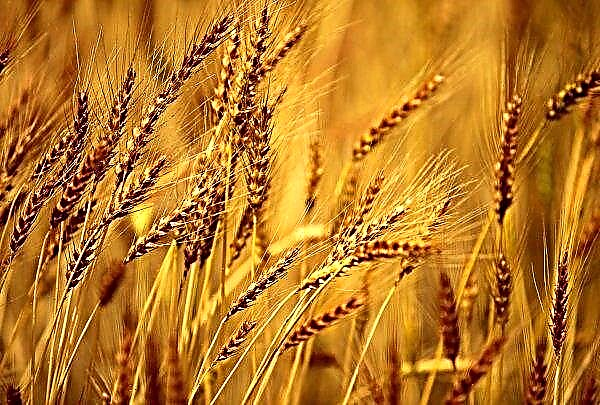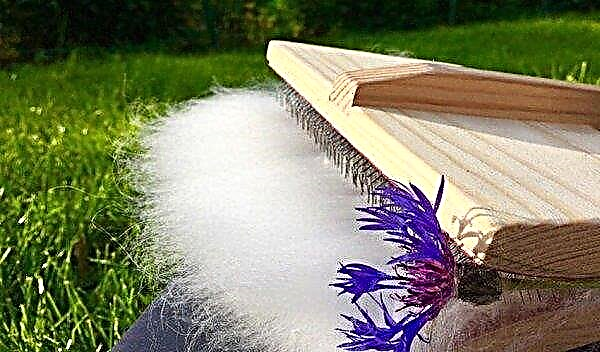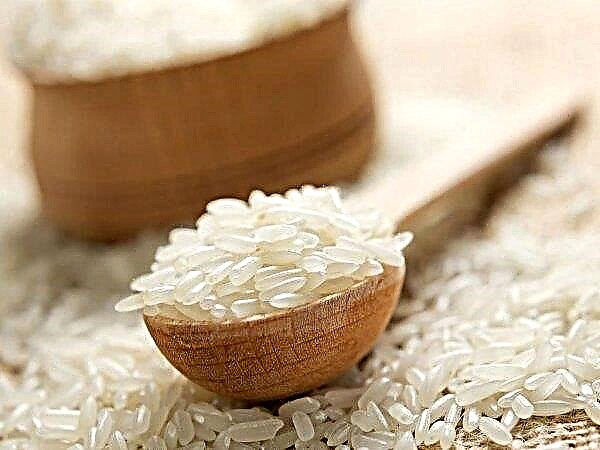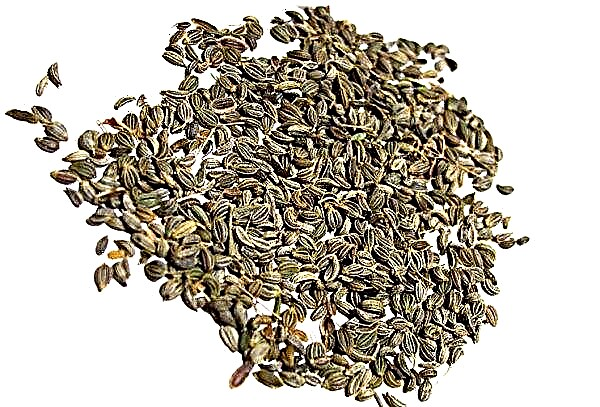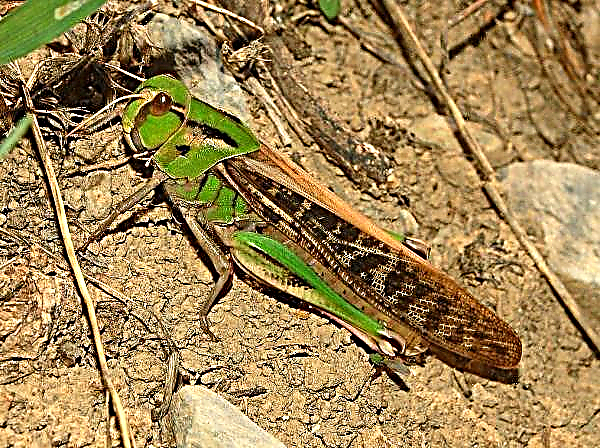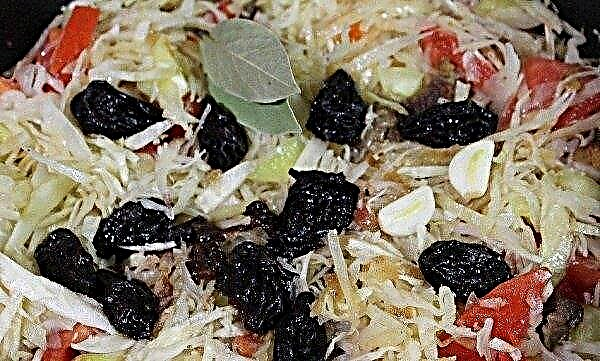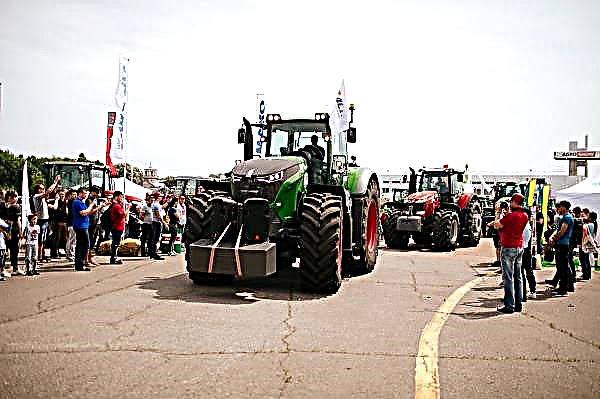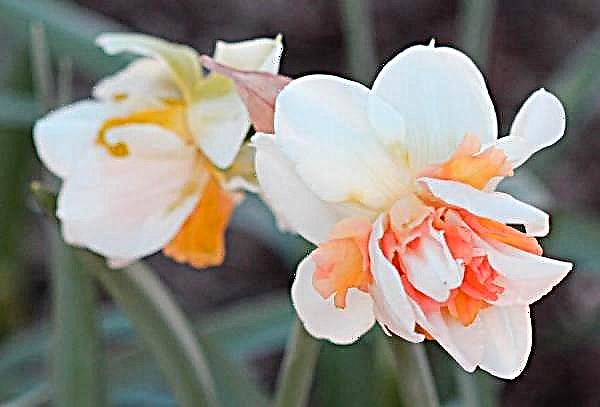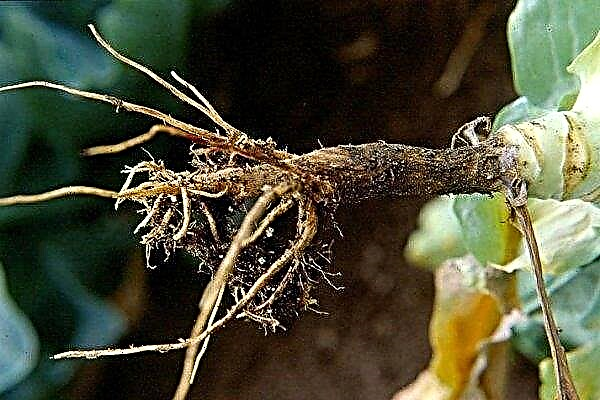Modern breeders continue to work on the development of new high-yielding and sustainable varieties of potatoes. One of the latest developments of domestic experts was the Meteor variety. Despite his youth, he already managed to gain popularity and recognition among gardeners. We offer you to get acquainted with its characteristics, advantages and the growing process.
Description and characteristics of the variety
Potato Meteor was obtained at the A. G. Lorch All-Russian Institute of Potato (n. Korenevo) and has been in the State Register since 2013. The variety is grown almost everywhere, but the most favorable climate for it is noted in the Central Black Earth, Volga-Vyatka, Central and West Siberian regions.
Did you know? The Meteor variety is perfect for preparing first courses, mashed potatoes, roasts and salads. It is very tasty in fried form and perfectly stored in a vacuum.
Meteor Characteristics:
- bush - medium-sized, semi-spreading;
- leaves are medium, bright green;
- the flowers are small, bright;
- tubers - large, oval-rounded, yellow;
- flesh - creamy, dense, not watery, does not darken for a long time;
- peel - thin with rare small eyes;
- the average weight of the fetus is 130–140 g;
- ripening - early, young potatoes 45 days, full ripeness 60–70 days;
- keeping quality is excellent;
- presentation - good, long maintained;
- palatability - excellent;
- productivity - up to 40 kg / ha.

Advantages and disadvantages
- The undoubted advantages of the Meteor include:
- early ripening;
- high productivity;
- product appeal;
- great taste of root vegetables;
- long crop safety;
- good transportability;
- resistance to most pests and diseases;
- good adaptability to external conditions;
- suitability for diet.
Planting and growing varieties
Potato Meteor is an unpretentious plant that calmly tolerates drought and gives a good harvest even in unstable weather conditions. However, only observing the optimal planting time and the rules for caring for it will help to collect the maximum crop of root crops.
Did you know? The record-breaking potato tuber listed in the Guinness Book of Records weighed as much as 11.2 kg. He was received by a resident of Saudi Arabia Khalil Semhat.
Optimal landing times
Potato planting time depends on weather conditions. The most favorable period occurs when the soil warms up to + 10 ° C. In the middle lane, this usually happens in late April or early May. Some gardeners are advised to focus on folk observations: bird cherry blossoms - you can plant potatoes.
Seed preparation
Planting material can be bought in specialized stores or pre-selected from last year's crop. Tubers should be carefully sorted, removed frozen, rotten or damaged by pests. About a month before planting, you need to start preparing the seeds, distributing them in one layer and setting them for germination in a bright and warm place. To accelerate germination, you can create a greenhouse effect by covering the boxes with polyethylene.
Important! If you plan to eat new potatoes, disinfection is not carried out!
Gradually, the tubers turn a little green, begin to sprout and by the time of planting, their sprouts should be about 1-2 cm. If possible, it is better not to plant specimens with too long and thin sprouts. To destroy pests and fungal infections, planting material must be treated with a solution of fungicide and insecticide, for example, "Confidor" or "Prestige".
Soil preparation
An open, illuminated area with well-warmed and moderately moist soil is suitable for planting the variety. It is better not to plant a culture in a lowland where water may stagnate. The variety is particularly active in loamy soils, but it also adapts well to peat or clay soils. However, when planting it on heavy soils, their moisture should be controlled. It is better to start preparing the soil under the Meteor since the fall, digging over the selected site and selecting all the weeds.
Digging is best done simultaneously with top dressing the soil:
- urea - 1 tbsp. l with a top on 1 m² of planting;
- rotted manure - 1 bucket per 1 m² of planting.
Landing rules
The weed and loosened area is divided into rows with a step of 60–70 cm. The holes are dug to a depth of at least 20 cm, every 30–40 cm, it is better in a checkerboard pattern. With insufficiently nutritious soil, fertilizers are applied directly to the pits. Then the tubers are placed in the wells with sprouts up, covered with soil and harrowed with a rake.
Video: planting potatoes
Cultivation and care after planting
The first shoots of potatoes appear after 2-3 weeks from the moment of planting. If weeds appeared earlier, you should weed the area. Further weeding is carried out as necessary. Potato bushes must be spudded, creating a protective layer of soil around the plants. The hilling process is carried out twice: when the bushes reach a height of about 15 cm and three weeks after that.
As a result, earthen mounds about 20 cm high should form around the potato bushes. This will not only further protect the plants, but will also help form additional lateral tubers.
Important! You should not plant potatoes in one place for two years in a row, as this leads to low yields. Other solanaceous plants, such as tomatoes, peppers, and eggplant, are also considered to be bad predecessors of the culture. The best option if last year the site was planted with cucumbers, legumes or herbs.
Despite the fact that Meteor potatoes tolerate a lack of moisture, dry earth crust should not be allowed. Watering is necessary as necessary in the morning or evening. It is better to use drip irrigation or special irrigation nozzles on the hose. Too cold water must not be used. After each watering, when the soil is slightly dry, it should be loosened. In addition, the site needs to be fertilized, usually top dressing is carried out three times a season under the root in moist soil:
In addition, the site needs to be fertilized, usually top dressing is carried out three times a season under the root in moist soil:
- The phase of rapid growth, before flowering. Each bush is watered with 500 ml of solution: 1 tbsp. urea per 10 liters of water.
- The appearance of buds. Each bush is watered with 500 ml of solution: 1 glass of ash and 1 tbsp. l of superphosphate per 10 l of water.
- Active flowering. Each bush is watered with 500 ml of solution: 1 tbsp. l of superphosphate per 10 l of water.
Diseases and Pests
Meteor has good immunity to almost all diseases of potato, but is sometimes susceptible alternariosis. It is manifested by brown spots on the leaves and dark marks on the tubers. In this case, the bushes are treated with fungicides according to the instructions for use. Prevention of the disease is timely watering and deep digging of the soil.
Did you know? Despite the misconception that there is nothing useful in potatoes, the content of vitamin C in it is no lower than in citrus fruits. And only 200–300 g of mashed potatoes will make up the necessary daily dose of magnesium, calcium, phosphorus and potassium.
The classic pest that does not refuse potatoes of any kind is Colorado beetle. The safest and most environmentally friendly way to get rid of it is a daily inspection of plants and the destruction of beetles and larvae. You can also process the culture with special tools "Antizhuk", "Commander" and others. A good prophylaxis of the bear, nematode and other pests will be the treatment of plants with a solution of insecticides. However, the best protection against damage to plantations is the well-groomed area and compliance with agricultural regulations.
A good prophylaxis of the bear, nematode and other pests will be the treatment of plants with a solution of insecticides. However, the best protection against damage to plantations is the well-groomed area and compliance with agricultural regulations.
Harvesting and storage
Potatoes are harvested after 60–70 days from the date of planting. Dug up tubers must be carefully sorted, removing all rotten and diseased specimens. Then they should be dried in a well-ventilated and dark place for 10-14 days.
Then again carefully sort through and send for storage to the basement or cellar with the following optimal conditions:
- light is absent;
- humidity - up to 75–85%;
- temperature - + 1 ... + 7 ° С.
 Now you know that Meteor is distinguished by a harmonious combination of unpretentiousness, rapid ripening, high yield and good storage. And the wonderful taste makes this potato especially valuable for growing on any household plot or in the farm.
Now you know that Meteor is distinguished by a harmonious combination of unpretentiousness, rapid ripening, high yield and good storage. And the wonderful taste makes this potato especially valuable for growing on any household plot or in the farm.

